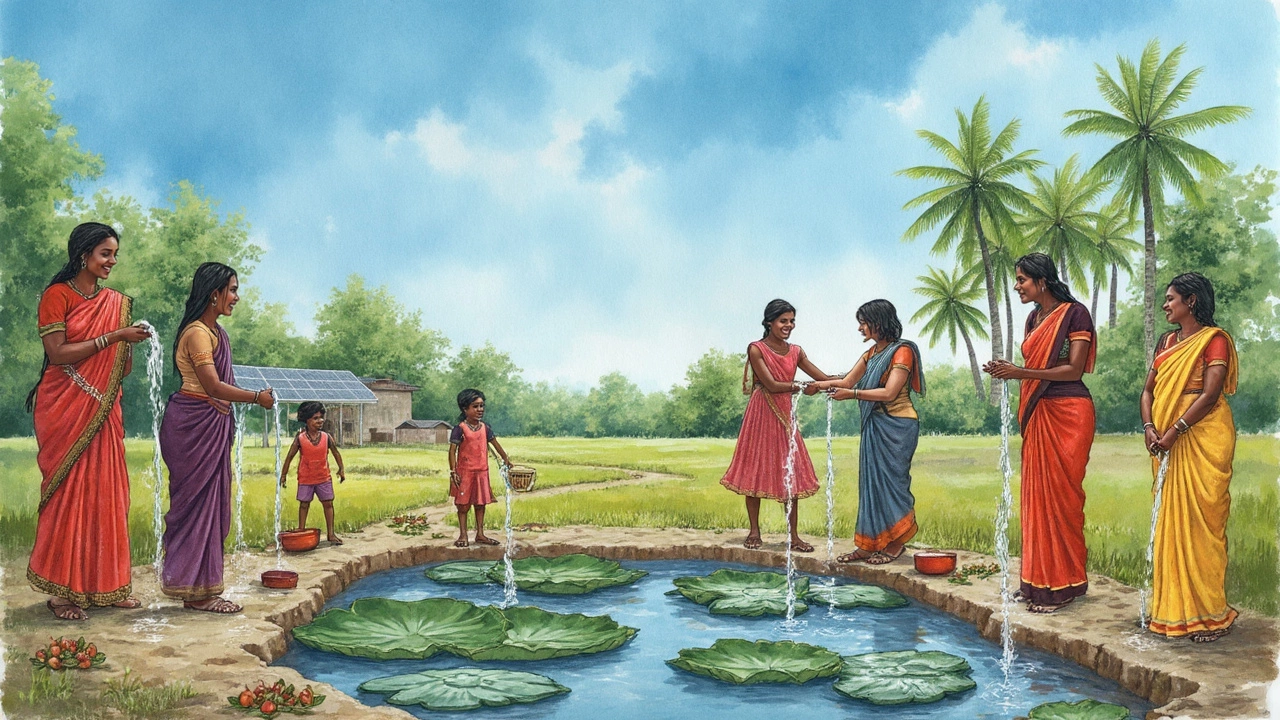If you’ve spent any time sorting out your budget or trying to impress your kids with how cool you are for being green, you’ve probably wondered: which environmental organization actually deserves my money? The headlines keep rolling in—deadlines for net zero, shocking species loss, wildfires blazing out of season. Picking the right group to back can feel like voting with your wallet, but the options are dizzying. Some nonprofits have star power but few results, while scrappy local crews sometimes pull off magic with half the attention.
Why Choosing the Right Environmental Organization Matters
Deciding where to donate isn’t just a matter of following a friend’s advice or clicking a sponsored Instagram ad. Every dollar helps—or hurts, depending on where it lands. The best environmental organizations have their boots on the ground, not just in boardrooms. Consider this: in 2023, an analysis by GiveWell found that some eco-charities spent up to 40% of their donations on marketing, while others put 90% right into field work and real conservation.
Supporting the right group can accelerate the shift away from fossil fuels, restore lost habitats, or pressure governments for real policy change. The wrong one? You might fund glossy brochures and annual galas instead of reforestation. I’ve had so many conversations with my kids—Zephyr and Azura—about the urgent need for action. They’re more likely to ask about plastic in whales’ stomachs than what movie to stream. The stakes genuinely resonate in our kitchen table talks.
Digging a little deeper, it’s clear that impact isn’t just about budget size. It comes down to effectiveness, transparency, accountability, and the scope of their work. Some groups tackle big policy. Others fight for endangered species. Some plant forests, some stand on the front lines of climate justice for vulnerable communities. If you really want your contribution to *matter*, you need to ask tough questions before opening your wallet. There’s a long history of greenwashing in the world of eco-charities, and even big names are sometimes more fluff than substance.
It also matters because the environmental crisis affects everyone—your family, your local parks, the air you breathe, the food at your table. Choosing smartly means you’re not just doing a feel-good gesture, but investing in a better life for real people (and plenty of not-so-cuddly critters, too). Transparent organizations will actually show you the results—trees planted, carbon stored, laws passed. Checking their track record isn’t cynical; it’s responsible. Your action ripples out, and in 2025, that’s true more than ever.
Heavy Hitters: The Large-Scale Environmental Organizations
Some brands are everywhere—their logos splashed across documentaries, grant reports, and social media: World Wildlife Fund (WWF), The Nature Conservancy, Greenpeace, and Sierra Club, to name a few. But are they actually moving the needle?
Take WWF. Born in 1961, they partner with over 100 countries and focus as much on habitat preservation as on big-picture lobbying. Their landmark Panda logo is easy to spot, as are their numbers: over 2,000 conservation projects every year, leveraging more than $400 million annually (according to their 2024 financial data). WWF launched the Living Planet Index, tracking wildlife population trends globally—a critical tool for scientists and policymakers.
The Nature Conservancy, meanwhile, is the world’s largest land conservation group, working in more than 70 countries. In 2024, they surpassed protecting 125 million acres, including crucial coral reefs and Amazon rainforest stretches. What sets TNC apart is its science focus—they employ more PhD ecologists than any other environmental nonprofit and have their own satellite mapping team.
Greenpeace loves headline-grabbing stunts, but there’s more method than many realize. In the past decade, they’ve helped drive the global ban on toxic chemicals like neonicotinoids (which nearly wiped out honeybees) and exposed illegal deforestation via undercover ops and drone footage. Greenpeace pushes past government and business denial, often at real personal risk to activists.
The Sierra Club has been leading local and national advocacy since 1892—yes, before modern plastic was even invented. With millions of members and volunteers, they’ve been instrumental in U.S. clean energy wins, like championing coal plant shutdowns (an average of 15 closures per year since 2015). Sierra Club’s inclusive organizing gets people in small American towns as passionate as those on the coasts.
Still, big can mean bureaucracy. Critics point out delays in acting quickly, and large organizations may take ‘safe’ stands instead of bold ones. Their impact, though, is undeniable; they sway policy, make news, and collaborate with other giants for coordinated action. If you want to be part of a worldwide push—backed by serious infrastructure—these groups are heavy hitters for a reason.

Powerful Small and Local Players Making a Big Difference
Don’t let size fool you. On the ground, small and mid-size organizations often punch far above their weight. Groups like Rainforest Trust, One Tree Planted, and 350.org often deliver high-impact results with limited budgets.
Let’s look at Rainforest Trust. Since 1988, this Virginia-based charity has protected over 45 million acres of tropical forests by buying land at risk of logging or mining, often working with Indigenous groups. Their secret sauce? Direct, transparent spending—93% of every dollar goes to on-the-ground conservation, not office parties or big salaries (they post audited annual reports online for anyone to see). Rainforest Trust was one of the first to offer donors a GPS-tracked, satellite-updated "adoption" — you can literally spot the patch of jungle your gift is saving.
One Tree Planted, meanwhile, plants—no surprise—trees. Fast. They hit record numbers in 2024: over 100 million trees in 80 countries. Their projects often tie in with wildfire relief, like in California or Australia, and agroforestry for sustainable farming in Africa. The kicker? For every $1 donated, they plant a tree. No strings, no asterisk. It’s a hook my own kids love; you can click through reforestation updates with every birthday they celebrate.
350.org takes the fight to the climate crisis itself, mobilizing massive activist groundswell—think international climate marches with four million participants at a time. Founded by author Bill McKibben, 350 was first to launch fossil fuel divestment campaigns, nudging universities, cities, and pensions to dump over $39 trillion in dirty assets (as tallied in 2023). The ripple effect is huge—when New York’s pension fund divested, it triggered dozens of similar moves worldwide.
These smaller groups are nimble. They quickly respond to new threats—like illegal gold mining or unscheduled pipeline construction. Their transparency is easy to check; you won’t find cash spent on celebrity endorsements here. And local groups often root benefits in their communities: clean water, new jobs, revived traditions. It’s personal, immediate, tangible work that scales up as donations pour in from folks wanting to see something happen now.
How to Research Charities and Avoid Greenwashing
So, how do you actually know you’re giving to the best environmental organization and not just a slick ad campaign? Start with the basics: look up third-party reviews. Sites like Charity Navigator, GuideStar, and GiveWell score nonprofits by transparency, financial responsibility, and actual impact. In 2025, the top-rated groups in this space (all with scores over 90/100) include Conservation International, Clean Air Task Force, and Rainforest Trust.
Make sure the group shares detailed reports—not just pretty photos, but numbers: acres conserved, laws passed, cleanups finished, emissions avoided. Don’t see an impact or annual report? That’s a red flag. I always email questions to customer service if things feel vague; the best organizations reply with real, practical info, not marketing fluff.
Watch for buzzwords, too. "Sustainable," "green," and "impactful" sound nice, but what exactly does that mean? Ask how donations are allocated. A typical breakdown for top groups looks like this:
| Budget Area | Typical % for Best Nonprofits | Warning Sign Threshold |
|---|---|---|
| Programs (field work, direct projects) | 75-93% | Below 65% |
| Administration | 5-15% | Above 20% |
| Fundraising/Marketing | 3-10% | Above 20% |
Greenwashing—where companies or groups exaggerate eco-credentials—is everywhere. The European Commission’s 2023 study found nearly 53% of green claims for products, organizations, or services turned out misleading or downright false. Be ruthless with research; don’t feel bad for asking hard questions! If you see a multi-million-dollar group promising to plant a billion trees with zero updates or local engagement? Tread carefully.
Dig into diversity and partnerships too. Are they led by, and working with, Indigenous peoples or frontline communities? These connections mean protections last. The best environmental organizations share power and knowledge, rather than swooping in as heroes.
Want the fastest answer? Plug their name into Google with “scandal,” “greenwashing,” or “charity rating.” Even my pre-teen has figured out this cyber-sleuthing. If your kids point out a red flag, take it seriously—they’re fierce climate detectives.

Tips for Supporting Environmental Organizations Beyond Donating
Sure, writing a check or setting up a monthly gift is the obvious move—but there’s a whole menu of ways to make a difference, even if your bank balance is more beans than bills.
First, volunteer. According to VolunteerHub’s 2024 trends report, eco-charities that mobilize hands-on helpers see up to 40% more impact in habitat restoration and citizen science projects. Even if you only have a weekend, pulling weeds at a local park or helping run a wildlife count adds up. My kids love amphibian surveys—finding frogs is basically a treasure hunt.
Use your phone for good. Share verified campaigns or urgent actions with your followers. “Clicktivism” isn’t useless when it tips petitions past a crucial threshold or spreads crucial info after disasters. Some groups need digital support for fact-checking, website updates, or phone banking, too—jobs you can do in your PJ pants.
Advocacy works, especially at the local level. Attend community meetings when parks, zoning, or renewable projects come up. Speak up. Email your elected officials—95% of Congressional staff say personal stories from constituents sway policy more than form letters (Pew Research, 2024). Teach your family and friends the real stories behind issues—from soil renewal to plastic bans.
Put your skills to work. If you’re a designer, offer to revamp educational materials. If you’re a teacher, bring environmental orgs into class discussions. My neighbor, a carpenter, volunteers for a green building nonprofit—kids learn to build birdhouses and bat boxes that actually protect local creatures.
Buying power counts, too. Pick products certified by credible groups (like Rainforest Alliance for food and Forest Stewardship Council for wood). Use the power of your shopping list to encourage companies to support the same causes.
Never underestimate the ripple effect. When you model involvement and values-driven giving for your family, especially kids, you’re raising tomorrow’s activists. Zephyr and Azura are already more climate-literate than I was at their age. Challenge them—maybe a contest to see who can find the coolest reforestation update, or make a fundraiser out of birthday parties.
The key? Stay connected. Follow your favorite environmental organization’s updates. Join online events. Celebrate when things go right, but don’t gloss over the setbacks. With honest engagement, you amplify every dollar, hour, or retweet you give—and that, more than any one group, fuels real change.
